Reva the Revenant: Our Chesapeake Chicken Rescue
By Kathy O’Hara
My husband Tom and I have driven across the 23-mile-long Chesapeake Bay Tunnel Bridge in Virginia countless times. But Friday night June 3rd was a sight
like no other.
We were heading out of the second tunnel when we saw it – white, fluffy, and on the road. A few seconds passed before we realized what
“it” was. I can still hear my husband, “Was that a chicken?”
It all happened so fast. I was in tears. Quick! Turn around. Make a U-turn at the first break in the road, drive back through the second tunnel, then the
first. Another U-turn through tunnel, road, tunnel!
Our plan: If the chicken was still there and not hit by a car, we’d slow down, turn on the flashers. I’d be ready with a towel, throw open the
door, and grab the bird!
 Cars whiz past Reva on the Tunnel Bridge highway.
Cars whiz past Reva on the Tunnel Bridge highway.
|
There she was, standing just the same, head stretched down and forward toward the oncoming traffic. I grabbed her!
This was not her day to die, and with that thought in mind, I named her Reva, short for “Revenant,” after the movie – a person who has
returned from the dead or a long absence.
Now – what to do with a chicken? Heading toward our boat at the marina on the Eastern Shore, we got a box from a liquor store and laid Reva in it with
her towel.
I called a friend hoping she knew someone who wanted a chicken. A few minutes later she called back. Turned out an advocacy sanctuary for chickens called
United Poultry Concerns was a mere 20 miles up the road on the Eastern Shore!
I left a phone message, and waiting for a call back, I made Reva a makeshift plastic water bowl. To my delight, she took several large gulps and even
seemed to splash a bit on her beak. I later learned this was the first time Reva had ever had unlimited access to water.
On Saturday morning, Reva was still alive! A call from Karen Davis at United Poultry Concerns said she would take Reva, and that her sanctuary assistant,
Holly Wills, would welcome Reva, Tom and me when we arrived. (Karen was driving to an animal rights event that morning.)
When we got there, Holly had a spot all ready for Reva on the screened porch with a bowl of food, fresh water, and a soft quilt. Holly said Reva probably
fell out of the truck taking her to be slaughtered on the Eastern Shore.
Later I spoke with a woman who said she’d seen Reva on the Bridge that Friday afternoon, but didn’t stop. From her account, Reva may have been
there for at least 2 hours before we found her.
We left UPC knowing that Reva’s story could not have a happier ending. She beat the odds. The rest of Reva’s life could only be good.
|
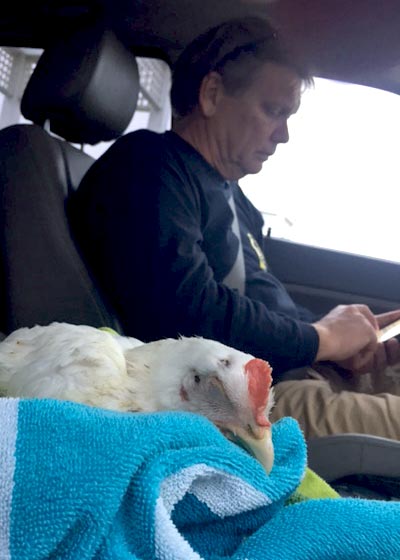
Reva safely in the car
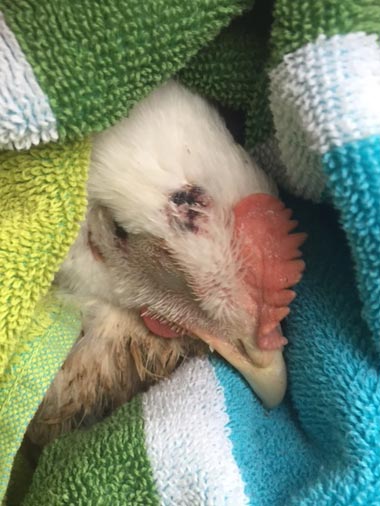
Reva exhausted from her ordeal
|
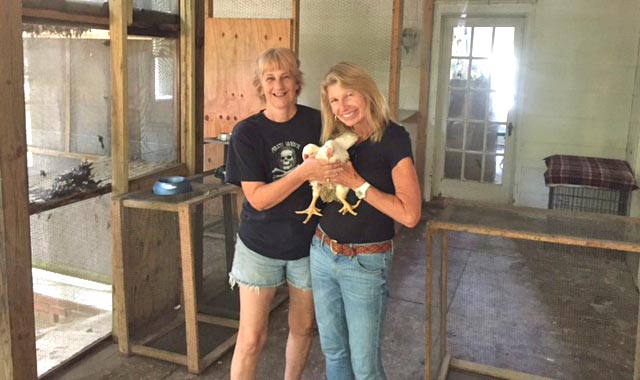
Reva with Holly and Kathy
Reva Today
By Karen Davis
Today is Friday, July 29th. Almost 2 months have passed since Reva was saved by Kathy and Tom that fateful Friday evening on the Chesapeake Bay Tunnel
Bridge.
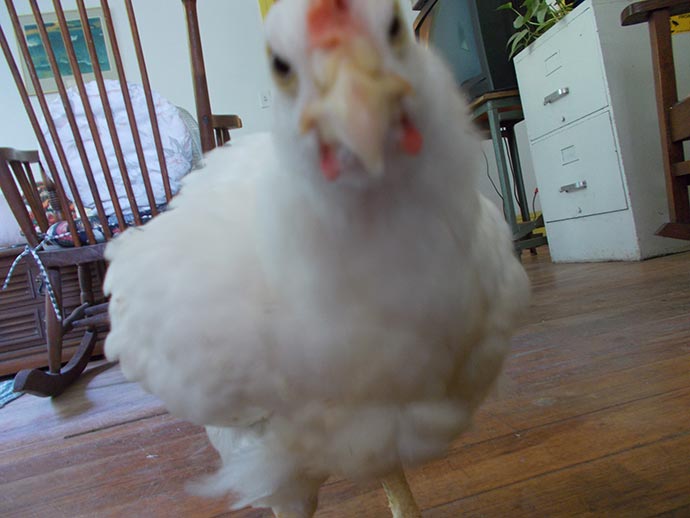
By Wednesday the following week, I’d pretty much decided she would not make it. She lay sleeping in the kitchen.
What a surprise, then, when on Thursday, she showed signs of life! Within a few days, she was standing weakly on her legs, looking around. She started
eating and drinking. She started following me around in the kitchen, stopping at my feet at the sink and the stove, sometimes staring straight up at me.
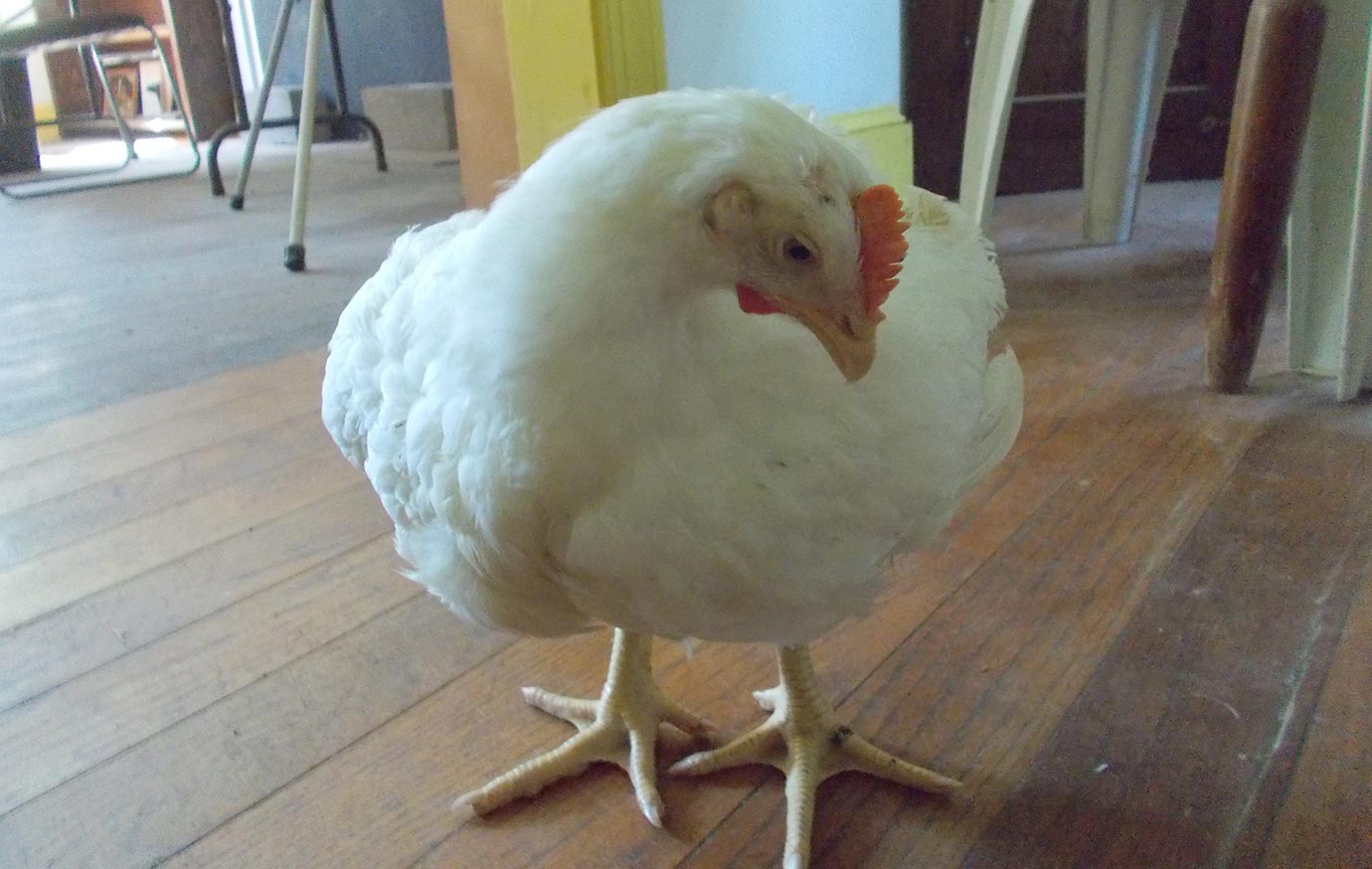
She cocked her face in a way that said she wanted me to stroke her throat and her beak. As long as I did that, she stood perfectly still.
But a Saturday morning came when, abruptly, she couldn’t get up. When she tried to stand, her body spun backward and her left leg splayed out and I
felt, this time for sure, she’s going to be lame for life. She was very distressed, and so was I.
But a few days later, Reva was once again shakily on her legs trying to walk. This time I decided to put her on Metacam, an anti-inflammatory pain
medication prescribed by our veterinarian.
Chickens bred for the meat industry are almost always in chronic pain, overburdened by too much weight for their bones and joints to support. If Reva was
in pain, this would cause her to sit all the time, weakening her legs even worse.
The daily dose of Metacam worked wonders for Reva. When I got home from the airport at midnight on July 11th and walked into the kitchen after being at the
animal rights conference in Los Angeles for four days, Reva greeted me on her feet! What a homecoming!
Today, Reva not only walks; she gets around well. At times she is almost spry in her jubilation.
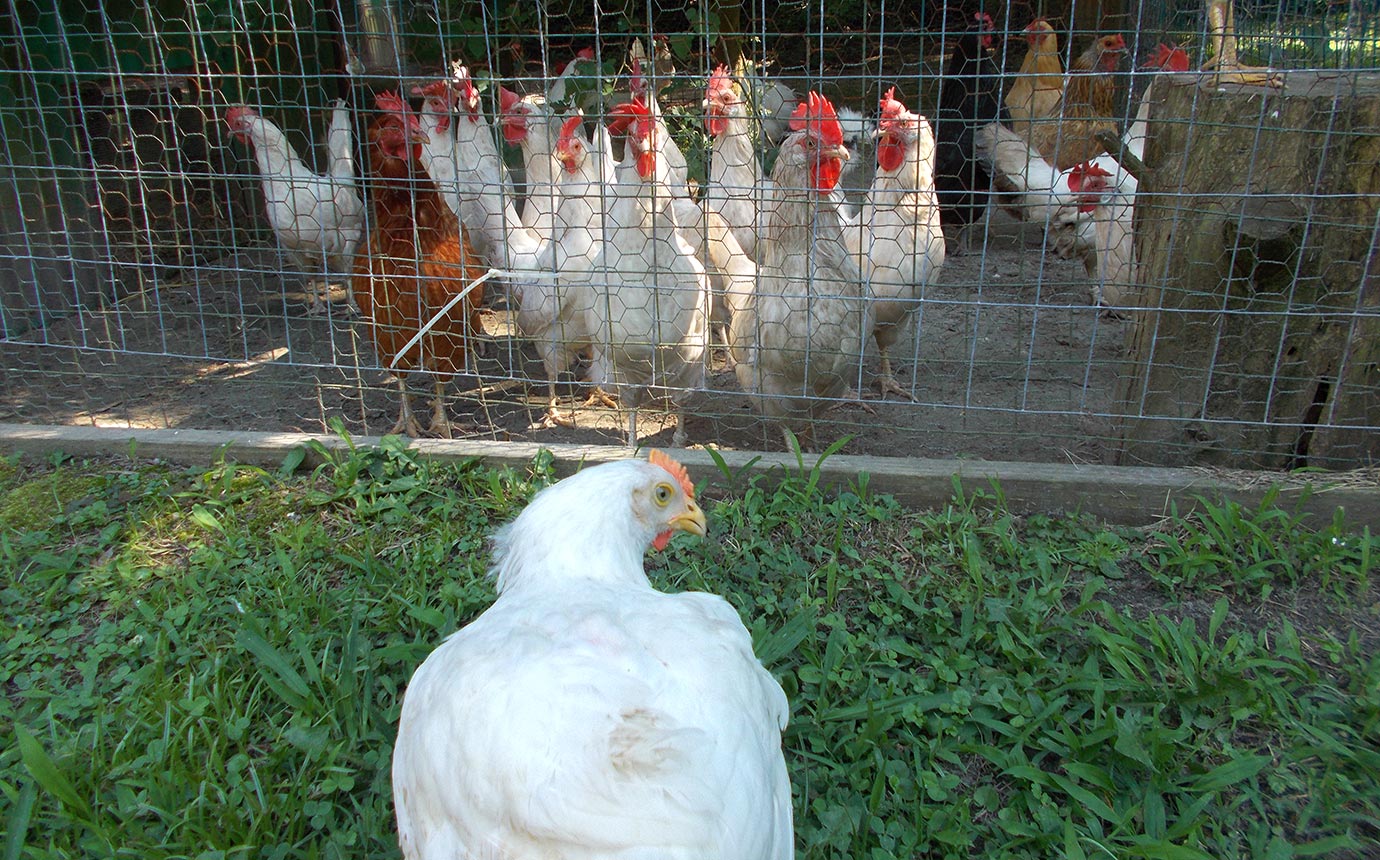
A group of our hens gather to greet Reva.
Kathy O’Hara visited us recently for the first time since bringing her here, and the interest Reva showed in Kathy suggested to me very strongly that
Reva remembered her savior on the Chesapeake Bay Tunnel Bridge. She just couldn’t get enough of Kathy, and when it was time for Kathy to go, Reva
tried to follow her out the door.
--Karen Davis, United Poultry Concerns, July 29, 2016
Postscript. It turns out Reva is a rooster –
a sweet, handsome, loving rooster!
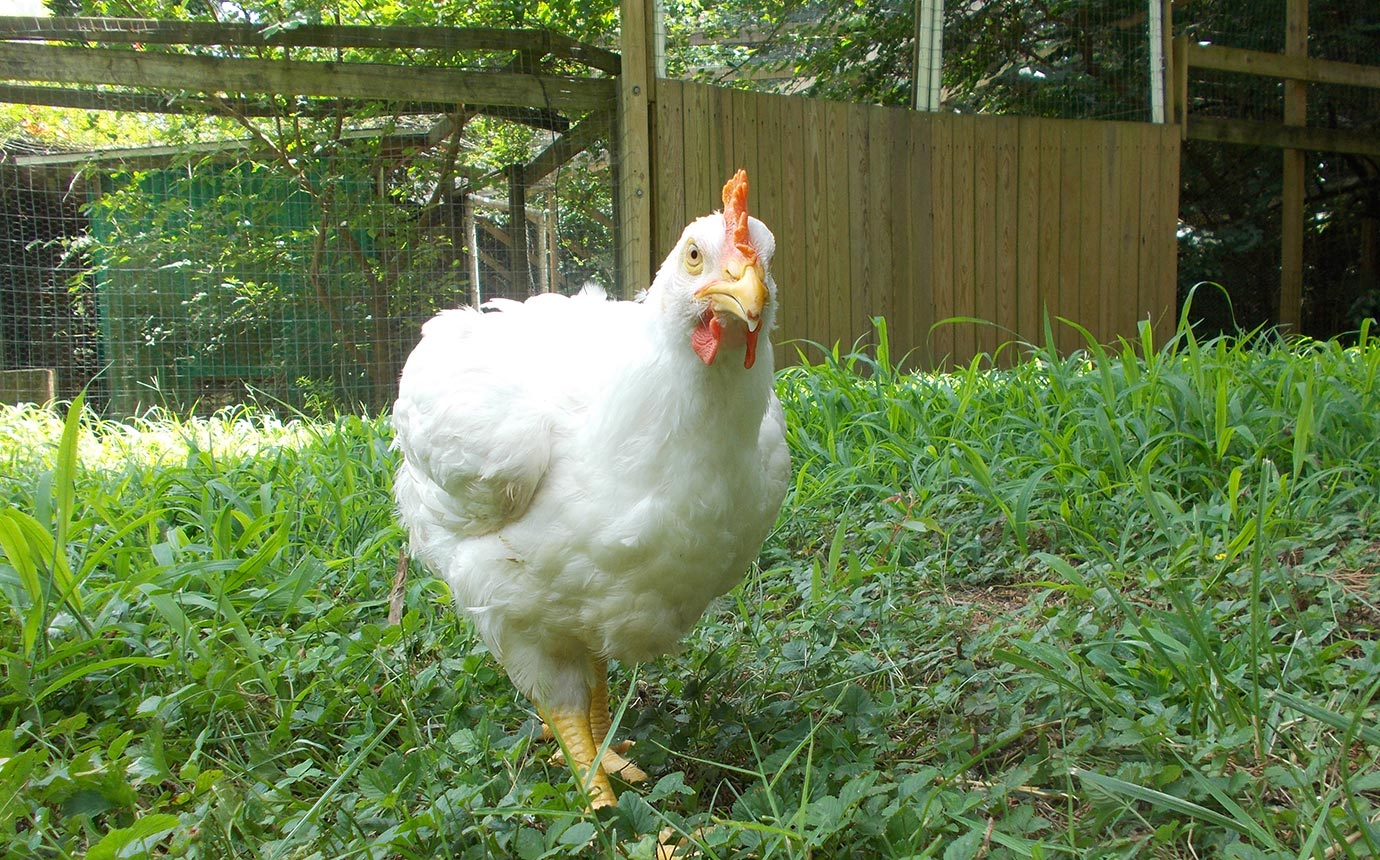 Reva walking in the grass
Reva walking in the grass
|
|